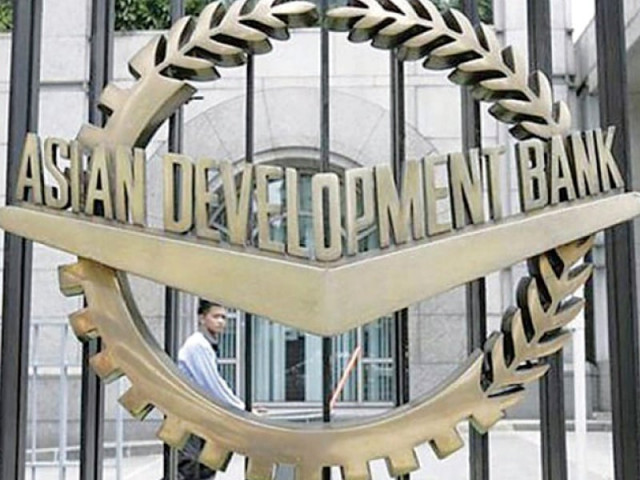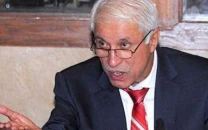10-year evaluation: ADB’s Pakistan performance rated less than satisfactory
Majority of projects under $11.5b lending portfolio were found ‘less than successful’.

This evaluation finds that the weak performance is partly due to key changes in the ADB’s portfolio after 2001 in terms of modality and sector focus. PHOTO: FILE
The Asian Development Bank’s (ADB) performance in Pakistan during last decade has not been up to the mark, with a majority of the projects in its funded lending portfolio of $11.5 billion being “less than successful”, according to an independent evaluation report.
The detailed report prepared by the ADB’s Manila-based Independent Evaluation Department (IED) highlighted flaws in ADB’s operations in Pakistan, the reasons behind such a high rate of failures and carried recommendations to make the intervention effective.
The IED carried out the evaluation for the period of 2002-2012 in which the ADB approved 116 loans worth $11.5 billion, out of which 69% were larger, more expensive ones. But the average success rate of the period was only 48%, underscoring the need to review the donor-funded growth model that was adding billion of dollars to the country’s debt without bringing much success.
From 2002 to 2012, the ADB was the single largest international lender to Pakistan, followed by the World Bank that provided $11 billion.
“Based largely on various sector program assessments undertaken, this evaluation rates the program over the period as less than successful”, said the evaluation report, which was carried out without the influence of the ADB’s country office.
“The ADB’s performance over the period is rated less than satisfactory”, the report continues.
The report stated that in the agriculture and natural resources sector, ADB’s intervention was less than successful. In the social sector the programmes were also rated as less than successful, bordering on “unsuccessful”. In water and other municipal and infrastructure services the ADB’s support remained below the desired target.
The IED’s findings highlight the need to review the approval mechanisms and effectiveness of foreign loans, which are designed in consultations with expensive foreign consultants who have little knowledge of the country’s ground realities.
What appeared to be a more glaring finding, the evaluators observed, was that the programmes in various sectors by the ADB were not relevant in spite of the alignment of many sector strategies with the government’s policy objectives. It attributed the low relevance to flaws in design of many projects, and especially program loans. Many such projects have ambitious goals, which results in failures, the report stated.
The report further adds that based on the ratings given in the project and program completion reports, the performance of ADB-supported operations was poor. Of the 61 programs and projects supported with 93 loans approved between 2002 and 2012, only 43 could be completed.
It observed that projects have been more successful than program loans, as the project success rate was 38% versus 15% of the programme loans.
This evaluation finds that the weak performance is partly due to key changes in the ADB’s portfolio after 2001 in terms of modality and sector focus. In particular, the ADB supported a huge governance agenda through a large number of complex programme loans in a difficult political context, and also various projects that were weak in design.
Significant course changes in the portfolio over the period may have had some effect as well, according to the report. Program loans were widely adopted, but successor tranches or loans that could have helped to deepen the reform or capacity developments were not released in many cases due to slow progress, it added.
Due to poor performance, the ADB decided in 2007 to restructure its portfolio and closed many projects.
The IED found that the ADB changed its focus areas and moved away from the goal of human development while pursuing higher sustained growth. The country office also overlooked the area of natural disaster management despite the country was prone to calamities. The ADB office gave higher priority to improving economic infrastructure in power, large-scale irrigation, national highways and corridors, as well as in urban development but failed to yield desired results.
Published in The Express Tribune, November 15th, 2013.
Like Business on Facebook, follow @TribuneBiz on Twitter to stay informed and join in the conversation.


















COMMENTS
Comments are moderated and generally will be posted if they are on-topic and not abusive.
For more information, please see our Comments FAQ